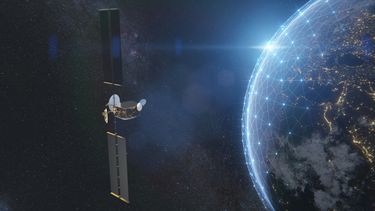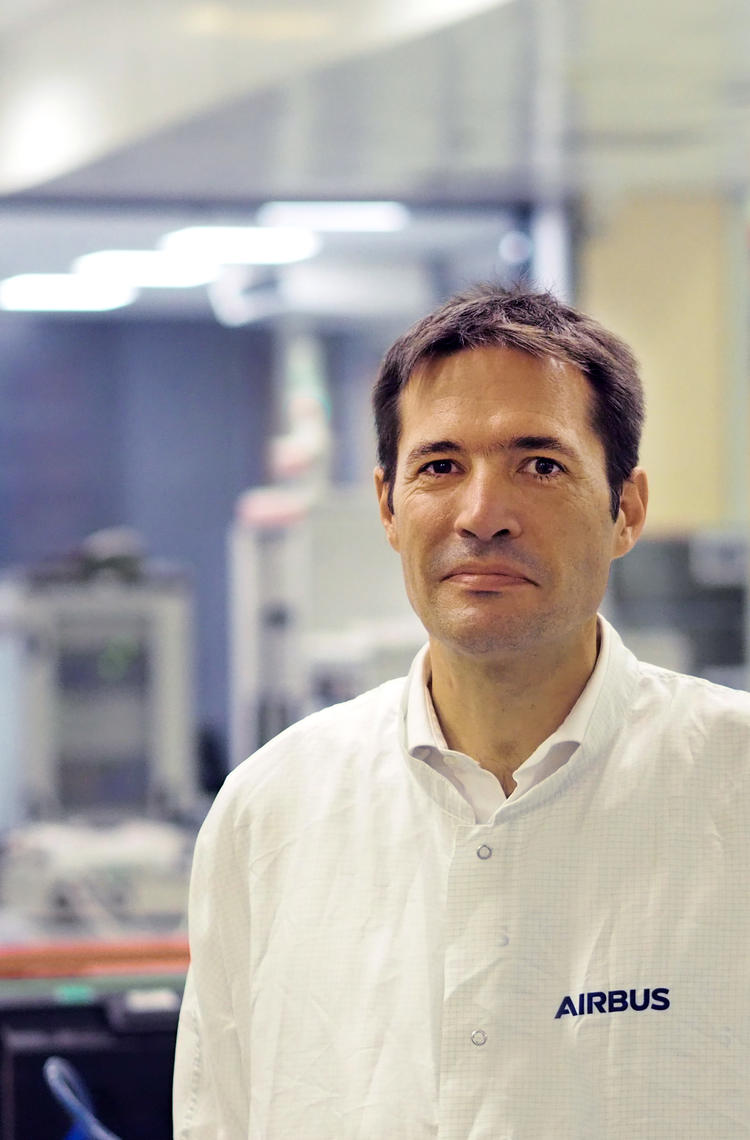Internet and TV satellites that can be reconfigured for new missions in orbit and replace wiped out communication networks in crisis zones: Yannick Le Naour is developing the first satellites that can do all that. And help save people’s lives.
No Internet or TV? For many, this is horror par excellence. Thanks to engineers like Yannick Le Naour, people can tweet, Instagram, stream movies and music, keep up with the latest news, or watch TV around the clock. And not just at home, but also on the move in trains, planes and automobiles. "Telecommunications satellites make all this possible," explains Yannick, who is the chief engineer of Airbus’ OneSat satellite project.
But what if you wanted to use an Internet or TV satellite for other tasks as well? For example, to replace land-based communication networks wiped out by earthquakes, tsunamis or storms? Until now, that's been very limited, Yannick says: "Legacy telecommunications satellites are designed for only one specific mission, and once they're in orbit, it's virtually impossible to reconfigure them from the ground."

That will soon be a thing of the past: The OneSat satellites that Yannick is developing with his colleagues can be reprogrammed for a new mission within minutes from control centres on the ground. Emergency services will then be able to use OneSat to exchange information, coordinate their activities and rescue people in crisis areas with no means of communication. “This helps to save lives,” Yannick says. Such power and flexibility is well received by satellite operators around the world: Seven OneSat satellites have already been ordered and are in production.
Yannick's job as chief engineer is just as multifaceted as the satellites he is responsible for. Something he really thrives on: "We are working in a highly competitive and innovative market. You always need to think ahead, reconfigure, fix issues, improve. Tomorrow is never like yesterday." In his role, he particularly appreciates having the all-round overview: "It's not like I work only on this or that part of the project, I see everything." He joined the programme early on during the bid phase and now leads the design, manufacturing and testing of the satellites, making sure that everything is delivered on time so they are ready to launch. All this is "really motivating and makes a great team atmosphere". As does working in a multicultural environment, with colleagues from all over Europe and partners and customers from Japan, the US, Australia and Africa.
For Yannick, OneSat is a perfect example of how Airbus is meeting its commitment to NextSpace: the company's future-oriented focus to connect, protect, inform, explore and direct our lives on Earth.”OneSat”, says Yannick, “ is all about quickly turning a good idea into reality so that humans can benefit from space technologies and improve their lives.”

